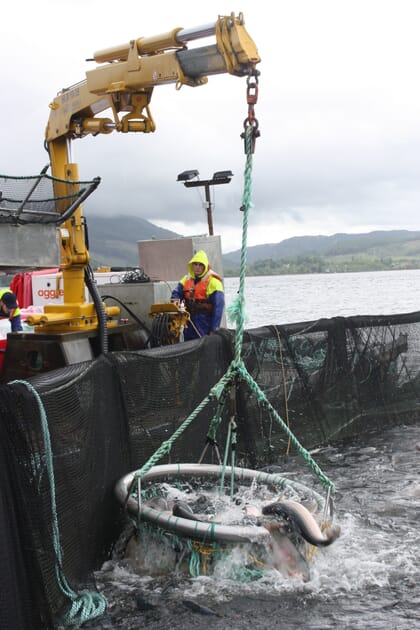Currently, two possible ways of treating farmed Atlantic salmon against sea lice – a key barrier to sector growth – are to bathe the fish either in freshwater or hydrogen peroxide, which quickly breaks down into water and oxygen.

© Rob Fletcher
A new project aims to determine what happens when freshwater and hydrogen peroxide-based treatment Paramove are combined. Co-funded by the Scottish Aquaculture Innovation Centre (SAIC), the project partners include Marine Harvest Scotland and Dawnfresh Seafoods, who have teamed up with Solvay Interox, Aqua Pharma and academics at the University of Stirling’s Institute of Aquaculture.
“This is early stage, investigative work being conducted within controlled tanks at the Marine Environmental Research Laboratory, part of the University of Stirling's Institute of Aquaculture, based at Machrihanish,” says Richard Hopewell, Fish Health Manager for Dawnfresh. “There, we hope to confirm the efficacy of using freshwater and Paramove in conjunction with one another, and, in doing so, contribute to the ongoing efforts of the industry in sea lice control.”
The anticipated benefits of the 12-month, £242,985 project include better control of sea lice, reduced use of medicines and shorter treatment times – all of which will further enhance fish health and welfare, and help deliver higher production volumes.
“This project has the potential to be particularly ground-breaking. Not only does it see salmon and trout producers unite against a key challenge, but if it succeeds in delivering a more effective sea lice control using available, environmentally-friendly resources then the entire sector stands to make huge commercial gains in the drive to grow Scotland’s market share,” says SAIC’s CEO, Heather Jones.
It’s thought that the applied research project could lead to further collaboration between salmon and trout producers to establish the therapeutic value of other approved sea lice treatments at low salinities.



